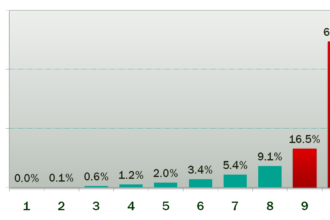 This week, I was invited to testify on Capitol Hill in front of the Senate Special Committee on Aging in a hearing to discuss “Strengthening Medicare for Today and the Future.” Called to explore the possibilities for protecting the Medicare program without shifting costs or cutting
This week, I was invited to testify on Capitol Hill in front of the Senate Special Committee on Aging in a hearing to discuss “Strengthening Medicare for Today and the Future.” Called to explore the possibilities for protecting the Medicare program without shifting costs or cutting
 This week, I was invited to testify on Capitol Hill in front of the Senate Special Committee on Aging in a hearing to discuss “Strengthening Medicare for Today and the Future.” Called to explore the possibilities for protecting the Medicare program without shifting costs or cutting benefits, the hearing provided an opportunity to underscore several concepts that were raised at the Partnership to Fight Chronic Disease’s (PFCD) event in December, “Medicare & Health Care Savings: Can Entitlement Reforms Help to Bridge the Gaps for Healthy Aging.”
This week, I was invited to testify on Capitol Hill in front of the Senate Special Committee on Aging in a hearing to discuss “Strengthening Medicare for Today and the Future.” Called to explore the possibilities for protecting the Medicare program without shifting costs or cutting benefits, the hearing provided an opportunity to underscore several concepts that were raised at the Partnership to Fight Chronic Disease’s (PFCD) event in December, “Medicare & Health Care Savings: Can Entitlement Reforms Help to Bridge the Gaps for Healthy Aging.”
As acknowledged by the Committee, recent polling suggests most Americans strongly oppose significantly cutting or changing the program to reduce the deficit. In the midst of speculation over the sequester, I was eager to point out that strengthening Medicare doesn’t require a complete recreation of the wheel – there is already substantial evidence from programs in states and the private sector in randomized trials that shows us what works… and that is care coordination. The sooner Medicare can implement the best practices that we already know are effective, the sooner we can all benefit from better health outcomes, a healthier fiscal climate and a protected and revitalized Medicare program. But we need to start now. Simply cutting payments to providers and Medicare Advantage plans will achieve budget savings, but they do not reduce costs and over time may ultimately reduce access to care.
With an emphasis on care coordination and prevention as critical elements to reducing spending and improving quality of health care, I also highlighted the importance of delivery reform and the critical role of providers in the process. With a more thoughtful approach to cost cutting, reforms can pay bigger dividends in the long term and provide for more sustainable changes that will help our aging population enjoy better health for a greater portion of their lives.
My full statement to the Committee can be found here.
image:healthreform/shutterstock








